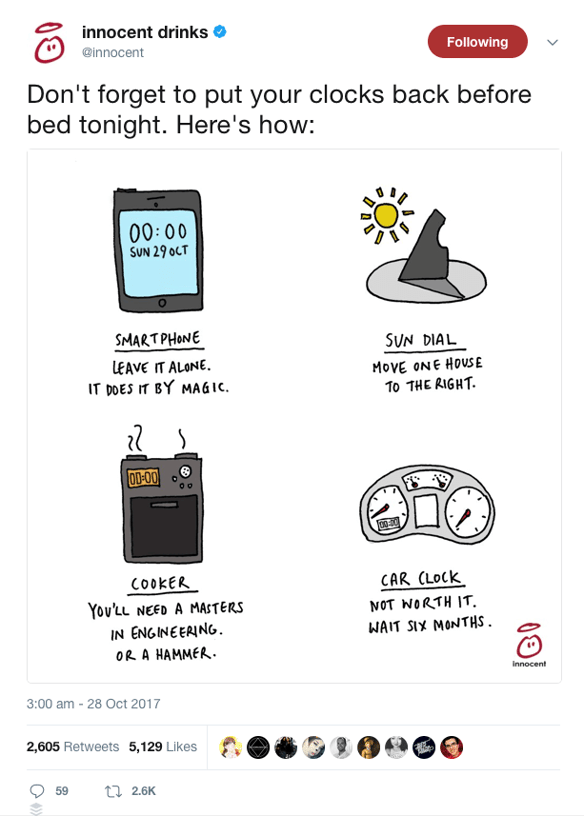Social media is a powerful way for brands to build and maintain a community management base of fans, which will hopefully turn into customers.
A successful social media community strategy will help your business gain a larger audience, thus providing more opportunities for potential sales.
These are the essentials to help you quickly build a strong social media community:
- Understand Your Community
- Collaborate with Your Community
- Host Webinars and Google Hangouts
- Share Exclusive Content
- Give Back to Your Community
- Start Promoting User-Generated Content
- Engage in Ongoing Conversation with Your Community Members
- Share User Success Stories
What are the major differences between a social media manager and social media community manager?
A social media manager is a multi-faceted job, blending elements of Content marketing and marketing as a whole, customer support and public relations. On the other hand, community social media managers are the people who represent their companies online by engaging with customers and prospects and building relationships on social media trends.
The best community managers don't just talk about the brand. They share helpful tips, offer assistance to customers and prospects, answer questions and form relationships with others in their industry based on mutual respect and admiration. In short, they create relationships that lead to word-of-mouth marketing which leads to brand evangelists - i.e. people who will sing your praises even when you're not around.
The best way to look at community management is as a tool that helps you build social media communities of people who love your brand and provides an opportunity to get to know your customers, understand their needs, and be a part of the conversation that is happening around your brand in the marketplace.
Successful community management is a combination of social media, event planning, and customer service. Also, a community manager bears the burden of representing your brand online, so it’s important to find someone who can accurately represent your brand’s voice and values. It’s not just anyone who can successfully grow and maintain a community.
The key theme here is that you must find the best ways to engage with your community online and offline. You must help them solve their problems in real life through collaboration and conversation. There are many ways to do this, but the core task will always be to socialise with your core audience in a way that adds value.
Social Media Management
Social media has become a major part of how companies interact with their users on a daily basis. Whether it's Facebook, Twitter, Instagram or LinkedIn (or all four), managing these accounts can be a full-time job unto itself, as someone needs to check for new comments, respond to tweets and keep an eye out for any questions that need answering. Also, some companies use social media as the main channel for customer support.
A community manager is the linchpin of a successful social media campaign. This person is responsible for building and maintaining a brand’s online presence in order to engage and interact with customers.
Plus, a community social media manager needs to have at least a basic knowledge of how each channel works in order to effectively use them. The first real step is familiarisation with the different rules for each platform and learning what works best on each one.
For example, you should know that the average life of a tweet is only around 18 minutes before it gets buried under newer tweets from other people you follow.

(Image source: socialfiremedia.com)
Developing and nurturing strong customer relationships is what good social community management is all about. Done well, you will create an emotional connection between your online communities and your brand, boost customer retention rates, and improve your business's reputation right across the board.
Why? Because today, people are spending more time on social media than ever before.
Be they perusing B2B articles on LinkedIn at work, checking out the latest news and trending topics on Twitter during their lunch breaks, or chilling out in the evenings and flicking through Facebook or Pinterest or Instagram at home – social media has taken over our waking hours from dawn right through to dusk.
More importantly, however, is the fact that people are following and engaging with brands on social media. In all, 58% of social media users follow brands, according to research from MarketingSherpa. However, when we break down the demographics, we see that younger generations are much more likely to get involved with what brands are doing on social.
A massive 95% of 18-34-year-olds follow brands on social, 92% of 35-44-year-olds, and 85% of 45-54-year-olds. It’s only the older generation which is less likely to follow what brands are doing on social media – 35% of 55-64-year olds is the figure.
A solid social media marketing strategy should be included a s part of the overall marketing strategy.
But why do people of all ages like to get digitally involved with brands on social?
Well, there are many reasons cited in the MarketingSherpa survey, which garnered the opinions of 1,176 consumers. People are interested in receiving discounts, promotions and other incentives, of course. They’re also interested in the content that brands create and share on their social accounts – and they like that content to be of both the entertaining and educative varieties.
Other reasons consumers gave for following a brand on social media include for making direct contact, the brand reflecting the individual’s lifestyle and because their friends, family or colleagues also follow the brand. Below is a graph reflecting consumer reasons to follow brands' social media accounts.

(Image source: marketingsherpa.com)
In order to build a thriving and engaged community on social media, you need to be delivering on all of these fronts and more.
And that’s precisely what effective social community management is all about.
3 Tips for Social Media Community Managers to build an Effective Management Plan
Social community managers need to make meaningful connections with relevant communities, create added value for each and every member of those communities, and build lasting relationships that leave customers and followers satisfied.
However, as easy as it is to say what social community managers should do, the actual task itself is not always straightforward.
What’s needed is a working social community management plan to guide you. One that will help you keep your social community engaged with your brand, retain existing customers, and acquire new ones.
Here are three tips to help you build an effective social community management strategy that will enable you to do all of the above.
1. Community Managers Develop a Personality
One of the greatest things about good social community management is that it allows you to humanise your brand by bringing some real personality to the ongoing conversation.
A great example of this done well is the smoothie and juice brand Innocent Drinks’ output on Twitter.
What you’ll find when you visit the @innocent account is that the social community management team there doesn’t really post very much about the company’s actual products at all. Instead, they use Twitter to foster Innocent’s fun, clever, creative and ultimately loveable personality.
For instance, the account regularly posts humorous weather forecasts, which, of course, have nothing whatsoever to do with fruit juice.

(Image source: twitter.com)
Or they post things like this…

(Image source: twitter.com)
As you can see, these posts generate great engagement from followers because they do precisely what they’re designed to do – entertain the @innocent community.
As Innocent Drinks’ Community Manager Helena Langdon puts it: "We want to tell people about us in the most engaging way we can. It’s our goal to make our pages a place on social media where people want to visit and enjoy seeing in their timelines, then people won’t mind when we try to sell them drinks every now and again.”
This is effective social community management.
2. Answering Questions
People aren’t signing up to social networks so they can simply sponge up brand messages. On the contrary, they are active participants – leaving comments, making complaints, liking, sharing, and generally being busy bees in the various social hives.
As such, it’s not enough for you to simply post your own business updates as part of a social community management plan. You need to be encouraging questions from your community, and be willing to answer them in a timely fashion.
This, indeed, is the expectation. Research from Ambassador reveals some very telling figures about how consumers expect brands to handle customer service on social media platforms.
For starters, over half of all social users will engage with brands several times a month. And when they do, 71% expect to receive assistance within just five minutes of reaching out to a company.
The good news is that another 71% of customers who have a positive service experience via social media are likely to recommend that company to others. 70% of those who are helped out via social and have their questions answered will return as a customer in the future. Indeed, this is the true power of effective social community management.
 (Image source: getambassador.com)
(Image source: getambassador.com)
3. Encourage and Use Social Mentions to Tell Your Story
Yes. Ask your customers to tell their stories on your social channels – both about themselves and, importantly, about how they’ve used your product or service.
Over time, you will build up a substantial story base that you will be able to use in various marketing assets, such as the testimonial pages on your website or in your case studies.
Indeed, any form of user-generated content that you can elicit from your following on social media is great news for your brand. If they post a photo of themselves using your product on Instagram, great! But make sure you re-gram it, tweet it, Pin it or post it on Facebook as well if you can.
The idea is that you are recognising the most loyal customers of your community and helping them to help you tell your brand story to others. What it boils down to is ensuring that you're talking about your target customers on social media, and not just yourself.
A compelling brand story will naturally emerge from all the engagement, which you will then be able to build upon as you celebrate your customers who are illustrating their experiences with your brand for all to see.
Over to You
A thoughtful social media community is hard work, and not something to be taken lightly. It's not just about putting out a few tweets or writing some posts on Facebook and people are depending on you to provide value and direction.
Your audience are counting on you to be available, responsive, and transparent. In other words, they are branded communities, and they want to feel your presence with your own brand's content and more importantly 'brand voice'.
With more than 2,000 million active users, Instagram is one of the largest social networks to date and the app has been growing by leaps and bounds in terms of user acquisition and brand participation. And there are no signs of the platform slowing down, in fact - it's accelerating.
One important thing to remember is that while Facebook owns Instagram, the two platforms are maintained as completely separate entities, each with its own unique community and culture, both visually and in its functionality. This means that Instagram marketing requires a different strategy than Facebook marketing. This is also true for all the other social media platforms, so make sure you have a unique and total separate social media marketing strategy for each one before you go to market with a social strategy for each individual social network!
Most social media managers and their social media team (if they have one) know that effective social media community management is all about relationships, not social platforms. It's about making connections with your fans, followers, and customers online and creating a sense of community that you can all engage with together.
Remember that you need to be entertaining your community (especially in B2C) as well as informing and educating them, and that you need to be responsive to any questions or queries that are fired your way.
Put it all together and you’ll soon have an engaging brand personality that your community will be excited about. The compelling brand stories will emerge from all the conversations you create and participate in – and that’s right at the heart of what effective social community management is all about.
If you need help developing a social community management plan, get in touch with the inbound marketing experts at Incisive Edge today.







